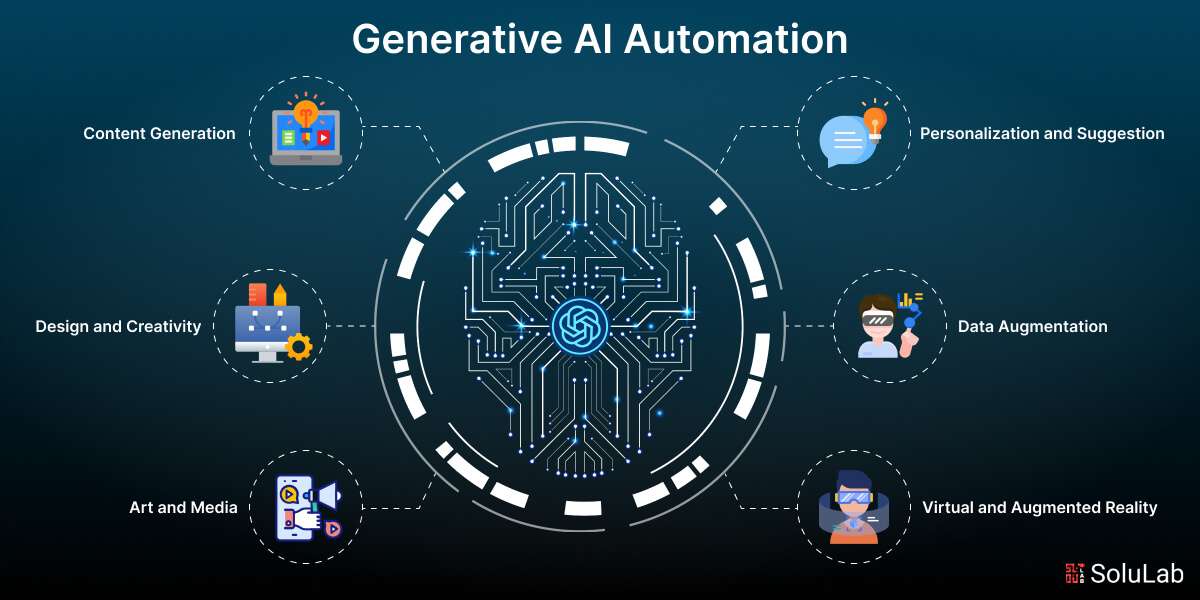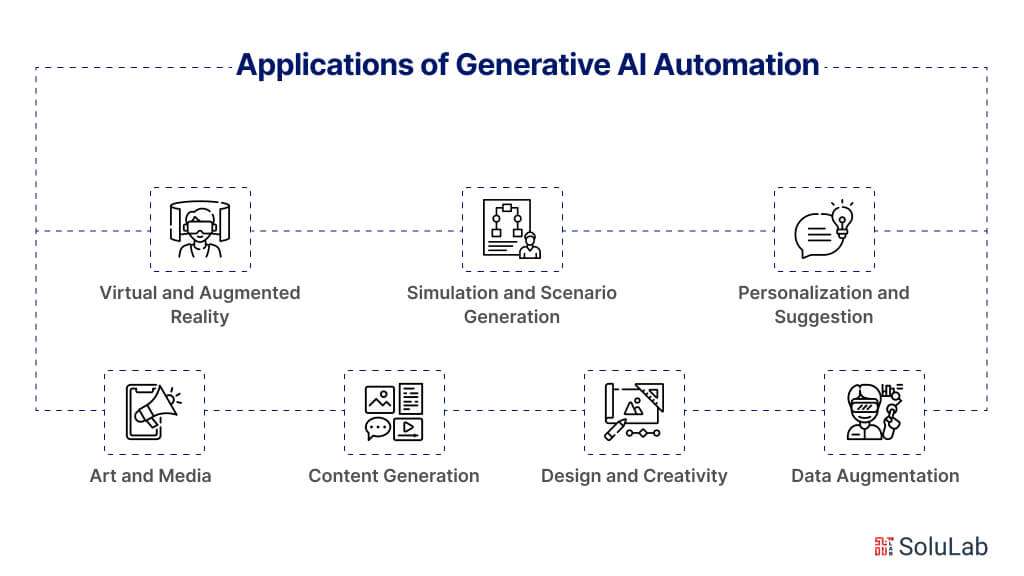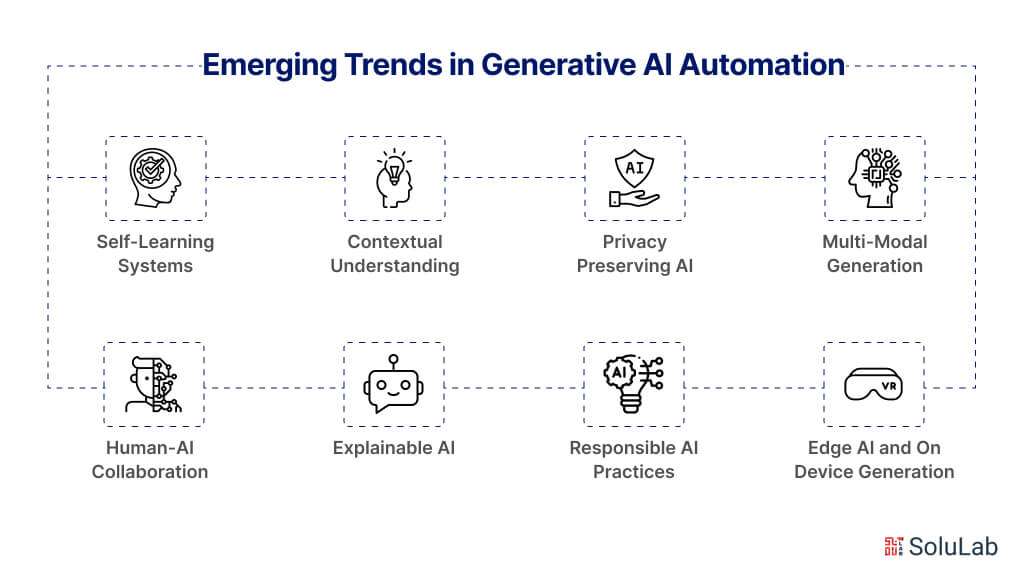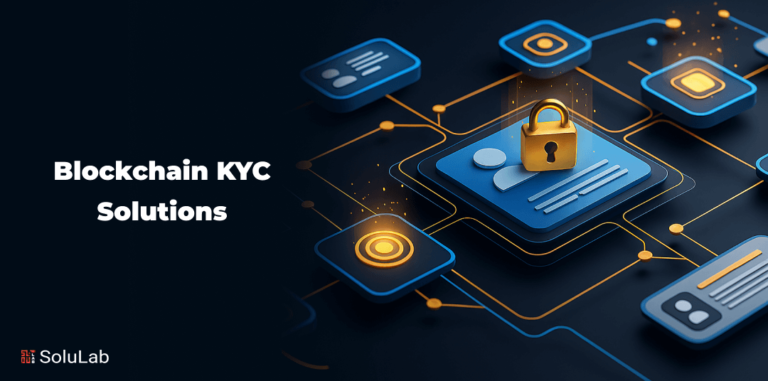
In recent years, we have seen a stunning technological shift fueled by Artificial Intelligence (AI). These innovations are having a significant influence on sectors and are gradually transforming how people live, work, and interact. Whether it’s integrating AI-powered virtual assistants into everyday activities or optimizing complicated corporate processes, AI has shown to be a tremendous driver for change.
As AI evolves, it is no longer limited to traditional rule-based systems. Instead, the attention is shifting to generative AI, a rapidly growing subfield of AI. Generative AI distinguishes itself by being able to invent, innovate, and overcome problems on its own, rather than just obeying predetermined rules.
This leads us to the critical role that generative AI plays in automation. This aspect of AI holds the potential to alter industries and push the frontiers of human-machine interaction. This technology benefits enterprises in a variety of industries, including marketing, customer service, data analysis, and product creation, by opening up previously imagined opportunities and efficiency. Generative AI for automation is set to play a key role in the continuing technological revolution.
This blog delves deeply into the field of generative AI automation, examining its possibilities, problems, and ethical implications. From comprehending the core concepts of generative AI to evaluating its applications across sectors, this blog sheds light on the technology’s disruptive potential.
What is Generative AI?
Generative AI is a subfield of artificial intelligence that focuses on creating new and unique material, concepts, or solutions that closely mirror those produced by humans. It goes beyond typical AI algorithms that focus largely on categorization or prediction. It entails training models to recognize patterns and structures in existing data and then applying that knowledge to produce new, unique results.
Overview of Generative AI Automation
Generative AI automation is the use of generative AI models to automate various operations and processes, hence increasing efficiency and productivity for enterprises across sectors. This method blends the ability of generative AI, which can generate unique material, with automation approaches, allowing computers to complete tasks independently.
How Will Generative AI Affect Automation?
Natural language is going to develop as the next automation language.
Citizen developers may streamline manual operations with low-code platforms, such as most RPA systems.
Citizen developers may use generative AI to design automated solutions. For example, the following description may be transformed into an automated solution:
- Get email addresses from the Suppliers table in PostgreSQL.
- Send these emails to a provider that can extract data from PDF files.
- Deploy extracted data into the ERP System.
Additional operations will be automated
Operations that were not viable to automate before will be able to automate owing to generative AI features such as
- Text comprehension abilities
- Creating text, images, or other data.
Benefits of Generative AI Automation
Because of the characteristics discussed above, generative AI will allow for more automation. As a result, businesses will see more automation-related benefits, such as:
- Increased Efficiency and Productivity: Generative AI automation may drastically accelerate processes and shorten the time necessary for tasks like content generating, design creation, and data analysis. This enhanced efficiency boosts production and allows organizations to do more in less time.
- Cost Savings: By automating procedures that would normally require human intervention, businesses may save labor expenses and move resources to more important activities. Generative AI automation eliminates the need for human labor, resulting in long-term cost advantages.
- Consistency and Quality: Generative AI models can consistently provide high-quality results without any discrepancies or mistakes that can arise in human approaches. This enables greater precision as well as accuracy, which is especially crucial in jobs such as design creation and data analysis.
- Scalability: Generative AI automation enables firms to grow their processes while maintaining quality. Automation can efficiently manage vast tasks, such as creating hundreds of product descriptions, designing logo variants, and analyzing massive datasets.
- Creativity and Innovation: Generative AI automation may boost innovation and creativity by producing new ideas, concepts, and solutions. It may bring fresh insights, explore undiscovered territory, and encourage human creativity by enhancing human skills.
- Streamlined Processes and Fewer Bottlenecks: Automating monotonous and time-consuming procedures allows employees to concentrate on better planning and value-added activities. This improves process efficiency, reduces bottlenecks, and enables teams to better deploy their time and expertise.
- Enhanced Decision-Making: Generative AI automation can help with the process of decision-making by offering data-driven insights, simulations, or projections. It is capable of analyzing complicated datasets and producing important information that enables organizations to make educated decisions.
- Personalization and Customer Engagement: Generative AI automation allows organizations to develop personalized content, designs, and suggestions based on individual consumer preferences. This level of customization increases consumer engagement, contentment, and loyalty.
Applications of Generative AI Automation

Generative AI automation offers a wide variety of applications in many sectors. Here are a few important domains where generative AI automation is useful:
1. Content Generation
Content creation is an important part of marketing and communication for organizations across sectors. Traditionally, developing content such as articles, product descriptions, social media postings, or marketing campaigns needed a significant amount of effort as well as time from human content writers. However, generative AI automation has altered this process by allowing for the automatic development of material that is creative, relevant, and scalable.
Generative AI uses advanced machine learning algorithms and natural language processing applications to comprehend patterns, structures, and semantic links within a dataset. By training on massive volumes of text data, generative AI models understand the fundamental distribution and may produce new content that matches the training data’s patterns and features.
2. Design and Creativity
Generative AI automation improves design and creativity by giving AI-assisted tools for quick ideation and prototyping, allowing designers to spend more time on experimentation and discovery, eventually encouraging an atmosphere of creative exploration. GenAI can help with product design, graphic design, user interface design, architecture, and more. The emergence of generative AI has introduced a powerful tool for automating and enhancing the design process. This technology enables designers to push the boundaries of creativity and create groundbreaking designs, therefore increasing the total creative potential. One of the most significant benefits of generative AI automation in design is the ability to explore design options. Generative AI models may develop fresh and distinctive designs that deviate from typical design methodologies by training on a variety of datasets and principles. This pushes designers to consider ideas outside the box, experiment with unique concepts, and push the limits of creativity.
In addition to extending the design area, generative AI automation allows for quick iteration and variety. Designers may rapidly create several design possibilities and variants depending on certain characteristics or design objectives. This allows them to examine many options, improve on concepts, and perfect designs more quickly than old manual techniques. The rapidity and flexibility of generative AI automation expedite the design process, helping designers meet tight deadlines and dynamically changing design trends.
Related: Generative AI in Automotive Industry
3. Art and Media
Generative AI automation has transformed the art and media sectors, providing artists and creatives with innovative resources to push the boundaries of creativity. Generative AI models may generate unique and engaging artworks by acquiring knowledge from large databases of old pieces and producing new compositions influenced by various creative approaches. This not only acts as a source of inspiration for artists, but it also allows for cooperation between human creativity and AI-generated aspects, resulting in revolutionary artistic expression.
Additionally, generative AI automation expands into music creation, permitting musicians to use AI-generated compositions as a foundation for their own musical creations. In video editing and visual effects, generative AI may automate scene segmentation and object-tracking activities, increasing post-production workflow effectiveness and allowing producers to focus on more creative decisions.
Furthermore, generative AI adds to the field of AR and VR by creating virtual objects and surroundings, enhancing users’ complete immersion in gaming, entertainment, and education applications. By offering fresh sources of inspiration, promoting experimentation, and fostering cooperation, generative AI automation allows artists and creatives to push the frontiers of artistic discovery and produce fascinating art and media material that captures and engages audiences in unexpected ways.
4. Personalization and Suggestions
Generative AI has a tremendous impact on customization and recommendation systems, changing how organizations provide individualized products, services, and information to individual consumers. Generative AI models may obtain extensive knowledge of user preferences, behavior patterns, and interests by employing complex algorithms and analyzing massive volumes of user data. This abundance of data annotation enables businesses to produce personalized suggestions that are tailored to the specific requirements and preferences of each user.
Businesses may employ generative AI automation to deliver highly relevant recommendations system based on AI and unique user profiles, rather than generic ones. Generative AI can record nuanced user preferences and produce tailored suggestions, such as proposing things based on prior purchases, movies based on viewing history, or articles based on reading interests.
5. Virtual and Augmented Reality
In virtual reality, generative AI automation may help create lifelike and compelling virtual worlds. Generative AI models may build synthetic scenarios that mirror real-world places or simulate imaginative settings after training on massive databases of real-world pictures. These created virtual worlds may be used in a variety of applications, including gaming, simulations, training, and virtual tours, to provide users with deep and interactive experiences that seem extremely genuine.
Moreover, generative AI automation allows for the creation of 3D models and objects that may be incorporated into virtual and augmented reality environments. By examining existing 3D models or photos, generative AI models may learn the fundamental structures, forms, and textures, permitting them to build new 3D models that match particular requirements and design objectives. This simplifies the process of developing virtual objects and assets, allowing developers to focus on more creative decisions and increasing the productivity of content production for VR/AR apps.
6. Data Augmentation
Generative AI provides a powerful option for data augmentation, an approach that improves machine learning models by creating synthetic data to complement current datasets. In many circumstances, machine learning models need a big and diverse dataset to discover patterns and produce reliable predictions. However, getting such datasets might be difficult due to restricted availability or disparities in class distributions.
Generative AI automation tackles this issue by using powerful algorithms to produce synthetic data that closely reflects the properties of the original dataset. By studying current data and understanding its fundamental patterns, generative AI models may produce new data points that represent the variances and complexities seen in the original dataset. This procedure increases the dataset by adding more training instances and introducing variables that could enhance the accuracy and generalization of machine learning models.
Read Blog Post: AI Use Cases and Applications in Key Industries
7. Simulation and Scenario Generation
Generative AI automation is critical in simulation and scenario production because it allows for the synthesis of synthetic data that is very similar to real-world data. This feature has several uses, including robotics, autonomous cars, and game creation, where creating realistic data is critical for training and testing complicated algorithms.
In the field of robotics, generative AI automation may create simulated settings and situations that closely resemble real-world conditions. This feature allows scientists and technicians to thoroughly test and validate robotic systems in a safe and controlled environment before deploying them in real-world circumstances.
Generative AI Automation Use Cases
Generative AI automation is revolutionizing industries across the spectrum by unlocking novel applications that redefine traditional processes. Here are some compelling use cases showcasing the versatility and transformative potential of automation with Generative AI:
- Software Development and Code Generation: Generative AI automation simplifies software development tasks by generating code snippets, automating debugging processes, and optimizing algorithms. AI-powered coding assistants enhance developer productivity, reduce time-to-market for new applications, and enable rapid prototyping in agile software development environments.
- Natural Language Processing and Text Generation: From chatbots and virtual assistants to language translation and summarization tools, generative AI automation transforms how we interact with textual data. Advanced natural language processing models generate human-like text, enabling applications such as automated customer support, content summarization, and multilingual communication.
- Medical Imaging and Healthcare Diagnostics: Generative AI aids in medical imaging analysis, disease diagnosis, and treatment planning. AI algorithms interpret radiological images, detect abnormalities, and assist clinicians in making accurate diagnoses. Additionally, AI-driven predictive models optimize patient care pathways, resource allocation, and treatment outcomes.
- Supply Chain Optimization and Demand Forecasting: Generative AI automation optimizes supply chain operations by analyzing historical data, predicting demand fluctuations, and optimizing inventory management. AI-powered forecasting models enhance supply chain resilience, reduce stockouts, and minimize carrying costs, enabling businesses to respond proactively to market dynamics and customer demands.
Read Blog: Generative AI in Supply Chain
- Financial Modeling and Investment Strategies: In finance, generative AI automation aids in financial modeling, risk assessment, and investment portfolio optimization. AI-driven predictive analytics models forecast market trends, identify investment opportunities, and mitigate financial risks. By leveraging generative AI, financial institutions enhance decision-making processes and achieve superior investment returns.
- Energy Optimization and Smart Grid Management: In the energy sector, generative AI automation enhances energy efficiency, grid stability, and renewable energy integration. AI algorithms optimize energy distribution, predict power demand patterns, and manage grid congestion, facilitating the transition to sustainable energy sources and reducing carbon emissions.
- Autonomous Vehicles and Transportation Systems: Generative AI automation plays a pivotal role in the development of autonomous vehicles and intelligent transportation systems. AI-powered algorithms enable vehicle navigation, traffic prediction, and collision avoidance, advancing the safety, efficiency, and accessibility of transportation networks in urban and rural environments.
- Environmental Monitoring and Conservation: With environmental concerns mounting, generative AI automation aids in environmental monitoring, species conservation, and habitat restoration efforts. AI-driven models analyze satellite imagery, track wildlife populations, and predict environmental changes, empowering conservationists and policymakers to make informed decisions for biodiversity preservation and ecological sustainability.
- Precision Agriculture and Crop Management: In agriculture, generative AI automation optimizes crop yields, resource utilization, and pest management strategies. AI-driven models analyze satellite imagery, soil data, and weather patterns to optimize planting schedules, irrigation systems, and fertilizer applications, enabling farmers to increase productivity and sustainability while minimizing environmental impact.
Emerging Trends in Generative AI Automation

As businesses continue to explore the vast potential of artificial intelligence (AI), a notable trend on the horizon is the convergence of automation with Generative AI. This synergy between automation and generative capabilities promises to redefine the way organizations operate and innovate. Here are some key emerging trends in this space.
1. Self-Learning Systems: Automation with Generative AI is evolving towards self-learning systems that can adapt and improve over time. By leveraging feedback loops and reinforcement learning techniques, these systems can continuously refine their performance and generate increasingly sophisticated outputs autonomously.
2. Contextual Understanding: One of the challenges in automation has been the lack of contextual understanding. Generative AI addresses this by enabling systems to interpret and generate content within specific contexts, leading to more accurate and relevant outcomes. For example, chatbots equipped with generative capabilities can engage in more natural and contextually relevant conversations with users.
3. Multi-Modal Generation: Generative AI automation is moving beyond text and images to support multi-modal content generation. This includes the synthesis of text, images, and audio in a cohesive manner, enabling richer and more immersive experiences. Applications range from virtual reality environments to interactive storytelling platforms.
4. Human-AI Collaboration: Rather than replacing human workers, automation with Generative AI is facilitating human-AI collaboration. These systems act as intelligent assistants, augmenting human creativity and decision-making rather than supplanting it. By seamlessly integrating with human workflows, they enhance productivity and enable new forms of collaboration.
5. Explainable AI: As AI systems become more complex, there is a growing need for transparency and interpretability. Emerging trends in automation with Generative AI focus on developing explainable AI models that can provide insights into the decision-making process. This not only enhances trust in AI systems but also enables humans to understand and validate the outputs they produce.
6. Privacy-Preserving AI: With increasing concerns about data privacy and security, there is a shift towards privacy-preserving AI techniques in generative automation. This involves developing algorithms that can generate meaningful insights without compromising sensitive information. Techniques such as federated learning and differential privacy are being applied to ensure privacy protection in AI-generated outputs.
7. Edge AI and On-Device Generation: Another emerging trend is the deployment of Generative AI models directly on edge devices, enabling real-time generation without reliance on cloud infrastructure. This approach offers benefits such as reduced latency, improved privacy, and enhanced reliability, making it particularly suitable for applications in IoT devices, autonomous vehicles, and mobile devices.
8. Responsible AI Practices: As AI technologies become more pervasive, there is a growing emphasis on responsible AI practices in generative automation. This includes considerations such as fairness, accountability, and transparency throughout the development and deployment lifecycle. By prioritizing ethical principles and societal impact, organizations can ensure that automation with Generative AI contributes positively to society.
These emerging trends underscore the dynamic and evolving nature of automation with Generative AI. By staying abreast of these developments, organizations can harness the full potential of AI-driven automation to drive innovation, efficiency, and operational excellence in the years to come.
Conclusion
Across a variety of industries, such as data analysis, product development, customer support, and content production, generative AI automation has enormous potential. It offers efficiency, scalability, and cost-effectiveness by empowering businesses to optimize workflows, boost output, and provide customized client experiences.
However, responsible use and ethical issues are crucial as generative AI develops and becomes more widely used. To secure the ethical use of AI and reduce possible hazards, it is crucial to strike the correct balance between automation and human engagement.
SoluLab, a leading generative AI development company, stands forefront to empower businesses to harness the transformative potential of Generative AI automation. With a team of highly skilled and experienced AI developers, SoluLab offers tailored solutions to drive productivity, efficiency, and operational excellence through automation. Whether it’s developing custom Generative AI algorithms, integrating AI automation into existing workflows, or providing strategic guidance on AI implementation, SoluLab delivers innovative solutions that align with clients’ unique needs and objectives. Ready to take the leap towards AI-driven innovation? Contact us today to hire AI developers and unlock the full potential of Generative AI automation for your business.
FAQs
1. How does Generative AI automation differ from traditional automation?
Generative AI automation goes beyond traditional automation by leveraging advanced algorithms to not only execute predefined tasks but also generate new content, designs, or solutions autonomously. While traditional automation follows fixed rules, Generative AI systems possess the ability to mimic human creativity and decision-making processes, leading to more adaptive and innovative outcomes.
2. What industries can benefit from Generative AI automation?
Virtually every industry stands to benefit from Generative AI automation. From marketing and design to healthcare and finance, the applications are wide-ranging. Industries such as software development, content creation, healthcare diagnostics, and supply chain management are particularly well-suited for leveraging Generative AI to enhance productivity, efficiency, and operational excellence.
3. What are the main challenges associated with adopting Generative AI automation?
While Generative AI automation offers significant benefits, it also presents challenges such as data privacy concerns, ethical implications, and algorithmic biases. Additionally, integrating AI into existing workflows requires strategic planning, employee upskilling, and organizational readiness to ensure successful implementation and long-term success.
4. How can SoluLab assist businesses in implementing Generative AI automation?
SoluLab, as an AI development company, offers comprehensive solutions to help businesses harness the power of Generative AI automation. Our team of experienced AI developers specializes in developing custom AI algorithms, integrating AI automation into existing systems, and providing strategic guidance on AI implementation. Whether you need assistance with developing AI-driven applications or navigating the complexities of AI adoption, SoluLab is here to support your journey toward operational excellence.
5. What are some emerging trends in Generative AI automation to watch out for?
Emerging trends in Generative AI automation include self-learning systems, contextual understanding, multi-modal generation, human-AI collaboration, explainable AI, privacy-preserving AI techniques, edge AI deployment, and responsible AI practices. Keeping abreast of these trends allows businesses to stay ahead of the curve and leverage the latest advancements in AI-driven automation to drive innovation and competitiveness.






